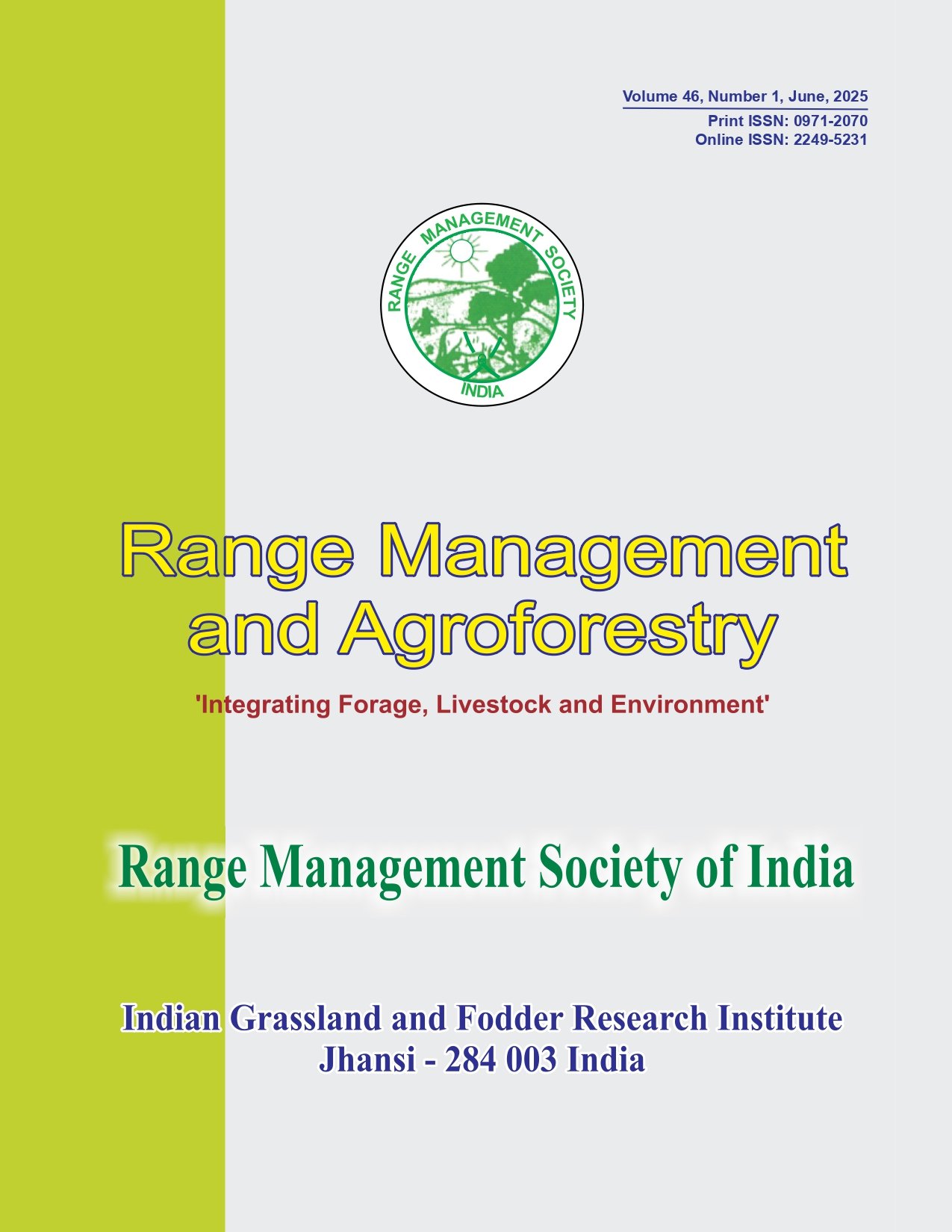Forage yield performance of five elite genotypes of buffel grass in hot arid region of Rajasthan
Keywords:
Cenchrus ciliaris, Cutting, Dry matter yield, Genotypes, TillersAbstract
Five genotypes of buffel grass (Cenchrus ciliaris) were evaluated for forage yield performance from 2011 to 2018 under rainfed conditions of the arid zone of Rajasthan. Significant differences (P<0.05) were observed among the genotypes for dry matter accumulation in 2011, 2013, 2017, 2018 and in the pooled analysis, while fodder cutting had a significant effect on the character during all the years. Genotype x cutting was also significant for forage yield during all the years except 2018. The pooled analysis also revealed that performance of genotypes was influenced by cutting. Genotypes differed significantly for tiller production during 2012, 2013, 2014, 2016, 2018, and in the pooled analysis. Whereas cutting significantly affected tiller production during all the years and interaction effects were significant only during 2012 and 2018 for this character. CAZRI 358 performed better for forage production as it had maximum mean dry matter pooled over the years, and most of the time, it ranked either first or second upto the eighth year of the experiment. Among other genotypes, CAZRI 2221 showed superiority when the sward was young. In middle age, CAZRI 75 performed better. As the age progressed, CAZRI 2178 was found to be very good for dry matter production. In such cases, mixed seeds of these genotypes could be used for the arid pasture/rangeland improvement programme.




